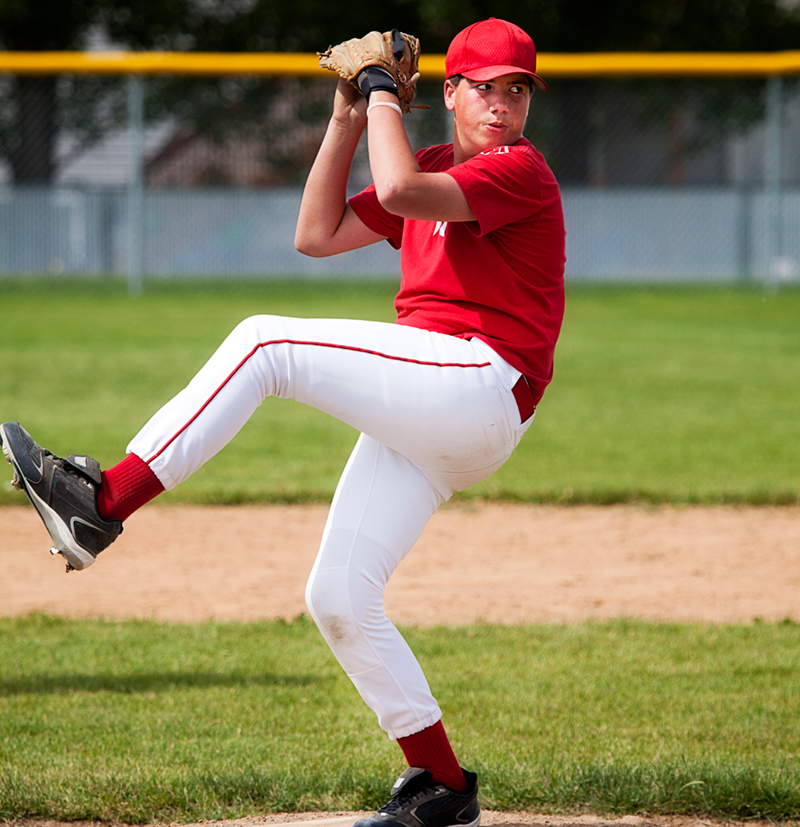
Little League injuries are common during baseball season. Many young players practice throughout the year, and the number of severe elbow and shoulder injuries is rapidly increasing.
Elbow and shoulder injuries are more common among pitchers. However, catchers throw as often as pitchers, increasing their risk of injuring their arms. This article takes an in-depth look at Little Leaguer’s Elbow (LLE), or Little Leaguer’s Shoulder (LLS), and how to manage this condition should a child sustain it.
What is Little Leaguer’s Elbow or Little Leaguer’s Shoulder?
Growth plates, or epiphyseal plates, are cartilage areas at the end of a bone where growth takes place. The humerus has two growth plates – one by the elbow and one by the shoulder. In children and teens still undergoing bone structure development, the cartilage areas are open, making them the weak spots in the upper arm.
Little Leaguer’s Elbow or Shoulder is growth plate irritation or micro-trauma, and this condition is often due to excessive pulling or pressure on these vulnerable bone openings. This overuse injury can also present as inflammation or avulsion fractures.
Common Causes
Carrying out an overhead throwing action, such as when pitching a baseball, puts a high level of traction on the growth plates in the elbow and shoulder, causing a micro-injury on either side of the humerus.
Over time, the repeated trauma can result in cumulative traction stress, adaptive bone formation, growth plate widening, and inflammation. The amount of repetitive throwing a younger baseball player does through a year is the most significant risk factor contributing to growth plate injuries.
Signs, Symptoms, and Diagnosis
LLS typically presents as pain in the lateral and anterior portions of the shoulder. Other symptoms include tenderness to touch, swelling, resistance to external shoulder rotation, and range of motion loss.
In an elbow with a growth plate injury, pain, tenderness, and swelling are present around the medial epicondyle, the bony area of the inner elbow. Pitchers with this condition might also experience pain when they bend or extend the elbow. Decreased grip strength is another common symptom of growth plate trauma.
Only a medical professional can diagnose a growth plate injury\. An orthopedic surgeon or physical therapist will perform imaging to determine the injury’s severity and detect growth plate inflammation, widening, or fractures.
Effective Treatments
After a thorough inspection, a healthcare provider will typically formulate a custom treatment plan that includes any of the following:
- Applying an ice pack or frozen peas to the area four times a day for up to 20 minutes at a time
- Taking anti-inflammatory medication
- Resting from throwing or pitching for six weeks or longer
- Reducing pitch count per season or year
- Doing physical therapy exercises to strengthen the rotator cuff, improve shoulder flexibility, and promote shoulder blade function
- Adopting pitching techniques that are less strenuous on the growth plates
Potential Long-Term Complications
If a growth plate injury doesn’t receive treatment as soon as possible, it might develop into a fracture. In cases where athletes continue playing with this injury, the soft tissue attaching to the humerus might rip off a fragment of the bone.
In the case of a complication, surgery might be necessary to restore the elbow or shoulder to full function. The patient might also need physical therapy for up to six months after surgery and will not be able to play baseball during this period.
Precautionary Measures
As a parent, you can do several things to reduce your child’s risk of growth plate injuries, including:
- Preventing your child from throwing baseballs every day, especially if they are a pitcher.
- Consulting with your child’s doctor to formulate an optimal training schedule
- Ensuring that your child’s coach helps them in using the correct throwing motion
- Seeking immediate medical care when your child complains of pain in their elbow or shoulder
- Preventing your child from playing baseball if they have an injury
- Limiting your child’s baseball training and playing activities to no more than nine months per year
Make an Appointment at The Orthopedic Center
If you notice any signs of Little Leaguer’s Elbow or Shoulder, schedule your child for an appointment with Dr. Ezra Berkowitz at the Orthopedic Center of Palm Beach County. To make an appointment, give us a call at 561-967-6500.





